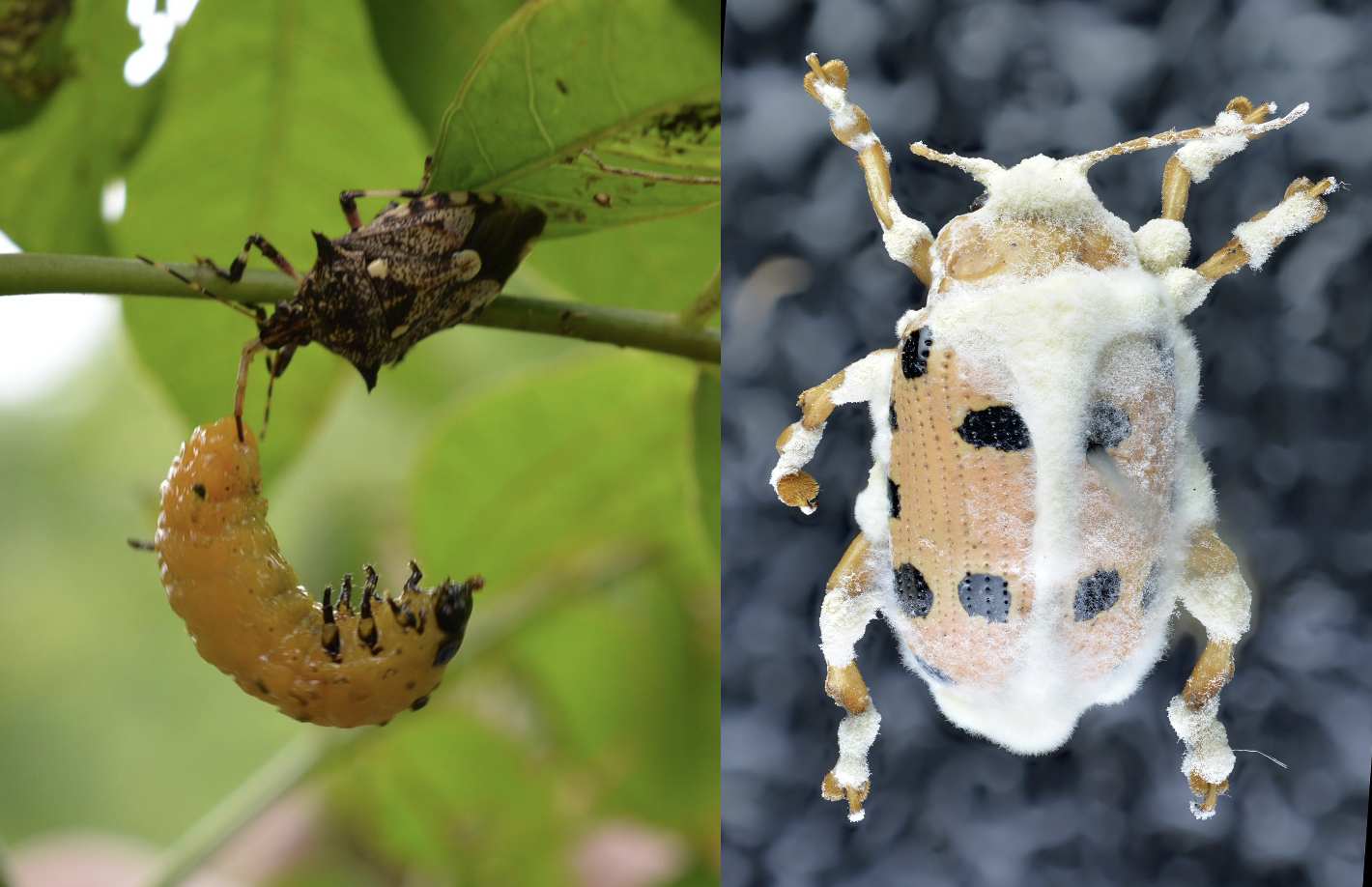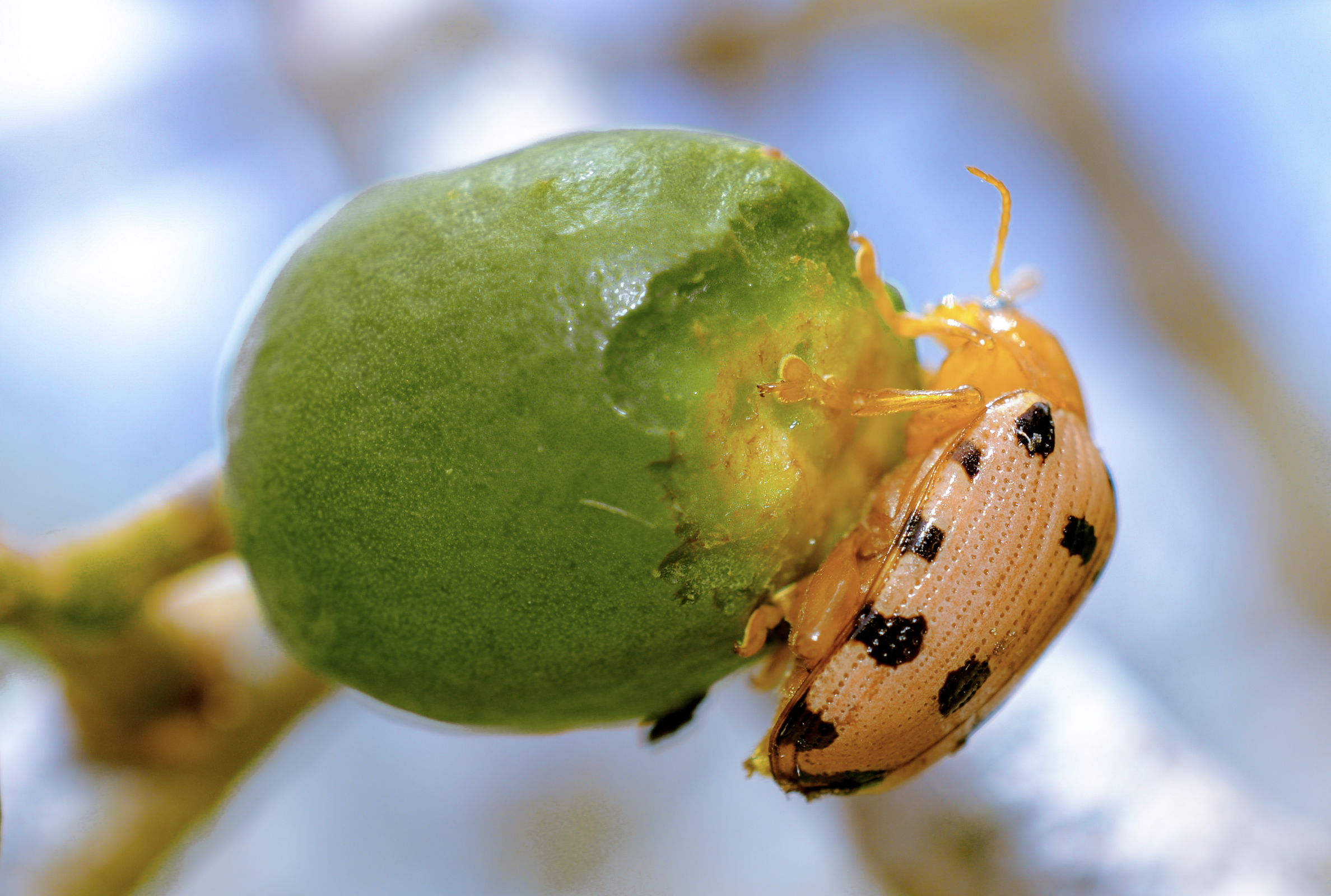An integrated pest management (IPM) package was successfully developed to control the sineguelas leaf beetle (SLB), an emerging pest of sineguelas causing up to 70 percent profit loss to farmers.
This package of technology was accomplished through the project, “Integrated Management of Sineguelas Leaf Beetle (Podontia quatuordecimpunctata L.) (Chrysomelidae: Alticinae) an Introduced and Emerging Pest of Sineguelas (Spondias purpurea Blanco) in Batangas." The project was funded by the Philippine Council for Agriculture, Aquatic and Natural Resources Research and Development of the Department of Science and Technology (DOST-PCAARRD).
Led by Entomologist Orlando B. Calcetas of the Department of Agriculture-Regional Field Office 4A (DA-RFO 4A), in collaboration with the Bureau of Plant Industry-Los Baños National Crop Research, Development and Production Support Center (BPI-LBNCRDPSC), the project studied the biology and ecology of SLB and determine the efficacy of various control measures to develop an IPM package.
According to Dr. Calcetas, the population of sineguelas leaf beetle (SLB) is high from June to October, low in November and December, and residual from January to May. He also confirmed that SLB is not a threat to major crops such as mango, pili, rubber, and cashew. However, it prefers red sineguelas (Spondias purpurea L.), yellow sineguelas (S. dulcis), and hog plum or “Libas” (S. pinnata) as its hosts.

Pentatomid Bug feeding on SLB larvae (left) and adult SLB infected with white muscardine fungus (right). (Image credit: DA-RFO IVA)
Three biological control agents (one natural enemy and two entomopathogens) were also identified to effectively manage the SLB population–the pentatomid bug against its larvae, the white muscardine fungus for adults and pupae, and the green muscardine fungi for adults.
These findings led to the development of the IPM strategy for SLB, which consists of manual removal of new or adventitious sineguelas shoots, drench application of white muscardine fungus, release of pentatomid bug, and rotation spraying of insecticides such as Bufropezin, Imidacloprid, and Cypermethrin in case of heavy beetle infestation.
Dr. Calcetas reported that they plan to further validate the promising results of the entomopathogens in farmers’ fields during the extension period of the project. They also target to conduct additional IPM training sessions for sineguelas growers across the country, including Pangasinan and Romblon.
The success of the project was reported during a pre-terminal project review conducted by the Crops Research Division (CRD) of DOST-PCAARRD headed by Director Leilani D. Pelegrina, with Commodity Specialist for Sineguelas Ma. Cecilia S. Alaban, and key CRD staff.

